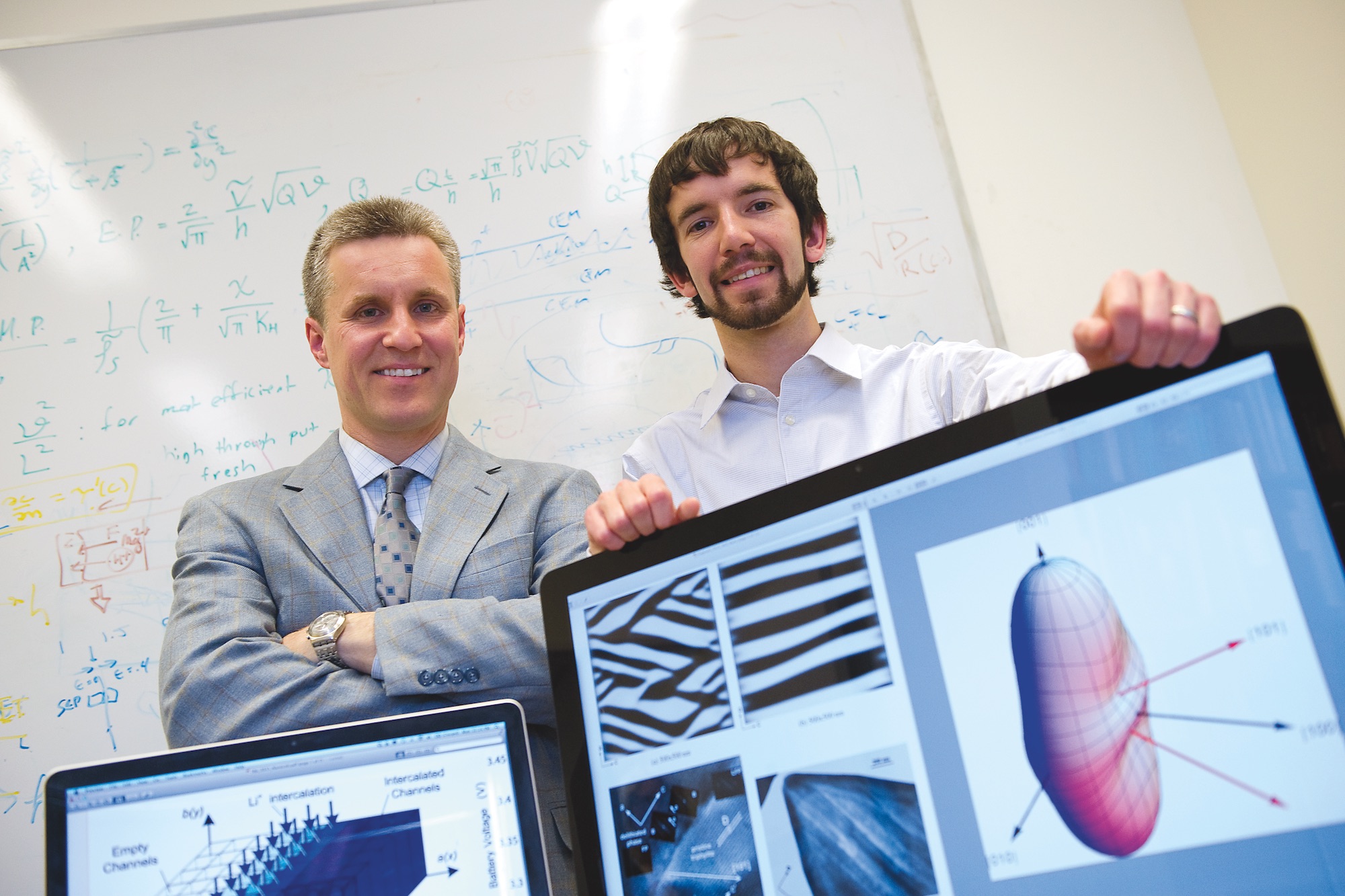Usually, if you’re doing something faster, you do more damage, but in this case it’s the opposite.
Martin Bazant, professor
Since its discovery, lithium iron phosphate (LiFePO4) has become one of the most promising materials for rechargeable batteries because of its stability, durability, safety, and ability to deliver a lot of energy at once. It has been the focus of major research projects around the world and is a leading technology used in everything from power tools to electric vehicles. Despite this widespread interest, the reasons for LiFePO4 ’s unusual charging and discharging characteristics have remained unclear. Now, research by MIT associate professor of chemical engineering and mathematics Martin Bazant and postdoctoral associate of chemical engineering Daniel Cogswell has provided surprising new results showing that the material behaves quite differently than had been thought, helping to explain its performance and possibly opening the door to the discovery of even more effective battery materials.
 Martin Bazant
Professor
Martin Bazant
Professor
 Daniel Cogswell
Chemical Engineering
Daniel Cogswell
Chemical Engineering

